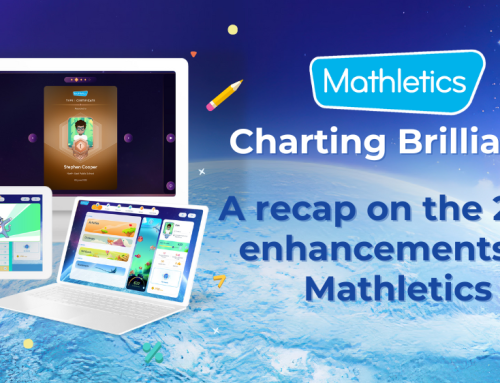Of all the challenges schools tackle in this day and age, Seven Oaks School District found itself facing perhaps one of the most relatable ones: adapting to diverse students’ learning styles, keeping students engaged, and enhancing the formative assessment process.
We interviewed Matt Henderson, who at the time of the interview was Assistant Superintendent at Seven Oaks School District (current title: Chief Superintendent and CEO of the Winnipeg School Division), on how embracing Mathletics on a district scale not only addressed their needs comprehensively but also revolutionized their approach to math education and became an irreplaceable “tool on a teacher’s belt”.
Watch the full video:
Challenge #1: Lack of Robust Data to Support Assessment
The school district recognized the need for a learning tool that could provide essential data for formative assessment, seen as one of the pillars of effective teaching. To ensure its effectiveness and significance, a diagnostic tool capable of evaluating students’ knowledge and mathematical proficiency was crucial.
Solution: As it turned out, Mathletics works perfectly within the framework of formative assessment.
By utilizing Mathletics in conjunction with formative assessment, the school was able to design data-driven learning experiences tailored to individual needs. Teachers can use Mathletics for simple diagnosis, identifying each student’s unique strengths and areas that need improvement.
However, Mathletics’ ability to enrich the understanding of student performance extends beyond formative assessment. Mathletics facilitates in-the-moment assessment, allowing teachers to gather data points during class. It becomes a tool for ongoing reflection, enabling teachers to easily adjust their strategies and design experiences that meet the diverse needs of their students.
“It’s a real sort of fruit basket of data for us to be able to get better at teaching.”
Challenge #2: A Burning Need for Student Differentiation
As the teaching ways shifted, the district aimed to adapt to the evolving ways students were learning. Henderson’s experience as a founding principal of a project-based learning school discovered a clear need for individualized learning strategies. Ensuring equitable access to quality education was also a significant issue.
Solution: Mathletics presented an opportunity to differentiate effectively and effortlessly. It provided extensions for advanced learners while enabling additional support for those who needed it most, so no student, no matter their instructional level, was left behind.
“Mathletics gave me an opportunity to really provide extensions for those students who wanted to go deeper and deeper, and then as an equity, issue of equity, I was able to spend more time with those students who needed me the most and that’s the definition of equity in my book.“
Challenge #3: From Disengagement to Feedback that Matters
Solution: Mathletics emerged as a powerful tool in boosting student engagement, especially during the challenges of the COVID-19 pandemic, by offering immediate feedback, allowing learners to assess their progress in real-time. This instant insight empowered students to navigate problem-solving experiences, recognizing areas of struggle and seeking support from teachers or peers. Mathletics introduced helpful hints and scaffolding, fostering a supportive learning environment.
The immediacy of feedback prevented disengagement, contrasting with traditional assessment forms that risked students losing relevance and interest.
“When we learn the cello, we don’t play and then get feedback three days later. We get immediate feedback. (…) And that’s where Mathletics helps us is to be able to provide that feedback in the moment, instantaneously and then that child is engaged.“
Henderson also noted that Mathletics not only provided immediate feedback regarding student performance but also opened channels for student-teacher communication.
“I could provide learners feedback based on what they were doing, but then they were giving me feedback in all sorts of ways to say ‘hey, we need to shift.’“
Bonus: Aligning with the Local Curriculum
Mathletics aligns seamlessly with the Manitoba curriculum, offering a structured approach to teaching mathematics. This alignment supports teachers in making informed decisions about what should be covered in the classroom and relieves the pressure put on teachers.
The immediacy of feedback prevented disengagement, contrasting with traditional assessment forms that risked students losing relevance and interest.
“Mathletics helps teachers to kind of think about that in teams, to sort of say ‘what are those significant concepts that I believe as a professional educator that learners need to leave my classroom with’. And I think Mathletics helps with that process.“
Mathletics: A Tool on a Teacher’s Belt
Describing Mathletics as a tool on a teacher’s belt, Henderson highlights its role in mastery, identity, and creativity. In Seven Oaks School District, Mathletics has become a lens through which teachers can assess if students have mastered skills, developed competencies, and identified themselves as mathematicians. The program also has proven to foster creativity by providing diverse resources and opportunities for students to create something new, encouraging them to ask questions and engage in meaningful inquiry.
Seven Oaks School District’s journey with Mathletics demonstrates how innovative solutions can help overcome educational challenges. From adapting to evolving learning styles to leveraging data for formative assessment, Mathletics goes far beyond being a simple math instruction program.







